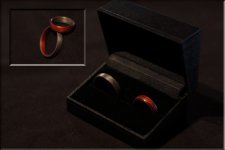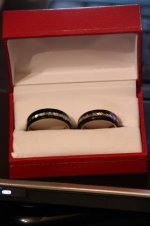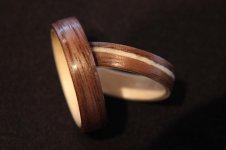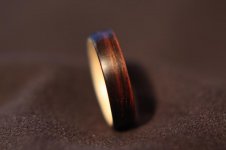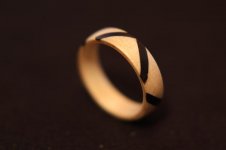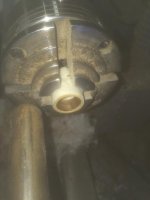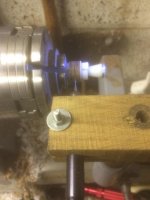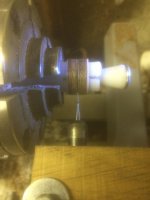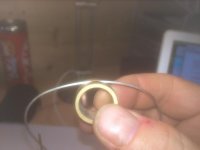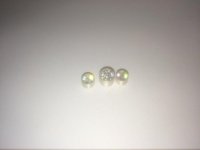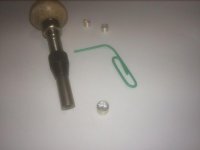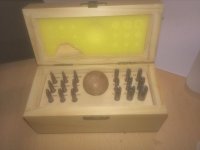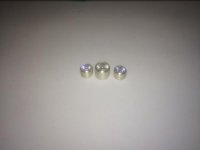Bentwood ring - some progress
First, the drawing of what I am aiming to achieve in case my 'word picture didn't make sense:
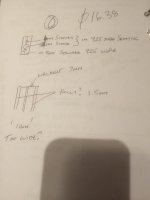
And a pic of the mandrel I made up to hold the ring in the lathe chuck (made out of acetal):
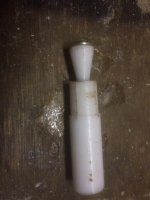
I threaded the mandrel (M6x1) and turned a cone to squeeze the 'jaws' outward to hold the ring.
So, after boiling the walnut strips I wrapped them over a round rod, secured them with masking tape (because it was to hand) and left them to get used to their new shape:
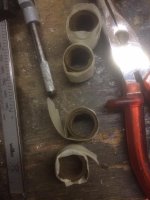
After a few days when I peeled the masking tape off they popped out a bit but mostly held their pigtail shape BUT ... they were still wet:
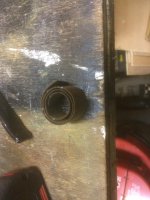
Since I was going to use CA I didn't want any moisture left in the timber so I blasted them with a hot air gun - as the heat hit them they straightened noticeably, but the moisture disappeared pretty quickly given how thin they are. Now for the fun bit - wrapping and gluing. There is a trick to this bit, and when I find out what it is I'll share it with you!


Basically you are trying to wrap a strip of timber that is resisting you around a mandrel sized to about a millimetre smaller diameter than your eventual ring size. First, I learned the hard way that it was best to first wrap a strip of masking tape around the mandrel or you just glue the ring to the mandrel.

Second, you need to lay a bead of glue along the outside edge of the inner 'tail', the bit that will be underneath as you complete the first wrap. Then you need to keep everything tight down on the mandrel as you make that wrap WITHOUT sticking your finger into the bead of glue ... !!! Simples ... Anyway, once the first wrap is down it gets easier, keep coating the inner surface with glue and wrapping until the entire strip is wrapped. I did leave bits of nitrile glove behind quite frequently, so I had to keep grabbing a sanding block to remove them before they got incorporated into the ring.
I then left the glue to dry, removed the ring from the mandrel and mounted it to the expanding mandrel for trimming and sanding on the lathe:
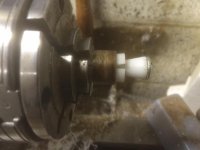
For internal sanding I used the Dremel:
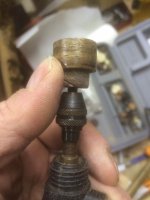
You can still see the laminations looking sideways on:
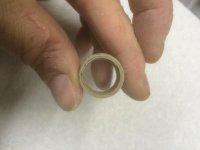
Next step is to add the holly sandwich to each side:
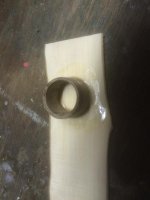
And that's where I am at the minute.




























